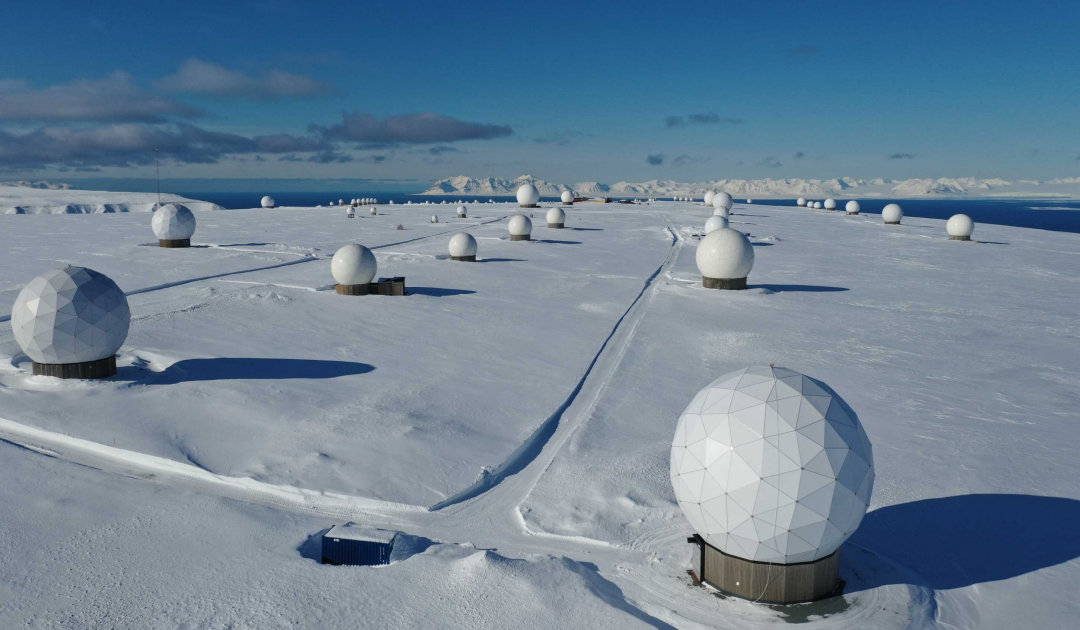
Auroras are a dreamlike magical sky phenomenon for many people. But for engineers and communications specialists, they are more an expression of a nightmare, because the source of the dancing lights in the sky are violent eruptions on the sun, so-called solar storms. These cause technical disruptions to satellites and communication lines, up to and including complete failure. To establish some sort of observation and early warning system, the National Oceanic and Atmospheric Administration NOAA has developed a mission program that will eventually establish a platform in deep space. The Norwegian satellite communications company KSAT is now part of the mission partners.
Service for the entire network of antennas for communications outside the U.S. for NOAA’s SWFO (Space Weather Follow On) project will be provided by KSAT (Kongsberg Satellite Service) in the future. The Norwegian company, based in Tromsø, states this in a press release. Together with the U.S. company KBR, which is developing the technical implementation of SWFO on behalf of NOAA, the network of 260 KSAT antennas deployed at 25 locations worldwide will provide data transmission on Earth to the SWFO platform planned for the mid-2020s in a orbit between the Sun and Earth and to NOAA’s research groups. This means that the KSAT network will provide services and communications outside the U.S. to navigate and control the platform on the one hand, and intercept and relay data to researchers on the other.

The SWFO mission, to be launched in the next few years, aims to place an observation and measurement platform at a very specific point in orbit around the suns. This point, known as Lagrange Point L1, has been used by NASA to observe the suns since 1995. This is an area that is overall gravity neutral, i.e., where the joint gravitational forces of the Sun and Earth are equal to the centrifugal force of the satellite. As a result, satellites orbiting the sun at this point use much less fuel for course corrections and also remain stable at this location for longer. NOAA’s planned platform will study so-called space weather and provide the data to researchers on Earth. But to ensure communication between the platform and Earth, NOAA needs a global network of antennas.

And this is where KSAT and its services come in. This is because the company has been operating such an antenna network for years, the most prominent infrastructure of which is located above Longyearbyen. One hundred antennas are operated here by the company on behalf of numerous companies that have satellites in various orbits. KSAT also has an antenna system near the Norwegian troll station in East Antarctica and at 23 other locations worldwide. “KSAT has a long history of excellence in providing high-value mission solutions for critical space programs,” said Amund Nylund, KSAT’s COO. “WFO requires a next-generation ground architecture with its always-on, low latency communications needs and L1 orbit. This is an exciting opportunity for us to realize capability beyond-geostationary orbit (GEO) with a purpose-built network.” SWFO is another milestone for the Norwegian company, which is already busy planning a ground network for communications with future lunar bases.

Solar storms provide the particles and energy that may collide with gas particles in the ionosphere region. This collision releases energy in the form of light, which is emitted in different wavelengths depending on the type of gas particle hit. Nitrogen molecules emit green light, while oxygen emits red light, which becomes visible on the ground accordingly. Depending on the strength of the storms, such auroras are also visible outside the polar regions. Particularly strong solar storms had been recorded in recent weeks, leading to auroral sightings over Macquarie Island in Australia, for example, as images on social media showed. Especially in the northern hemisphere very strong auroras were visible in the early darkening sky. However, the severity of the storms had also caused major disruptions to communication lines via satellites. If NOAA’s mission is successful, KSAT’s polar antennas will help reduce communications problems on Earth in the future.
Dr Michael Wenger, PolarJournal
Featured image: (C) Ruben Wu via KSAT
More on the topic





